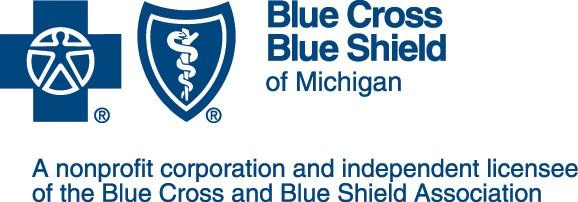NEWS & EVENTS
SPECIALTY CARE
I have pretty much all diabetes in my practice. If you’re seeing one of my patients, you better be putting one of these bad boys on! Because it’s a game changer in all this. And then a lot of folks come back and say, ‘Hey, now I want to do this.’ —Panelist and Family Nurse Practitioner
I'm talking to patients all the time, but all that I’m able to bill for is the placement, and then I have to attach that first 72 hours of data to my note in order to get paid for that. So as far as interpretation, we've been told that even though we're doing CGM interpretations, we're not going to get paid for it as pharmacists. —Panelist and Pharmacist
At our regional meetings earlier this year, members voiced a need to further operationalize workflows for CGMs in their primary care practices.
On September 1, 2022, the Michigan Collaborative for Type 2 Diabetes held a live webinar with a panel of members with expertise in implementing continuous glucose monitors (CGMs) in their primary care practices.
The panel discussed the following topics:
- Identifying patients who may be right for a CGM.
- Workflows associated with receiving CGM data from patients.
- Workflows associated with how CGM data is uploaded to the EMR/reviewed prior to, or during patient appointments.
- Roles in the office related to CGM prescribing (e.g. introducing a CGM to patients, providing education, uploading the data to the EMG, reviewing the data, etc.).
- Strategies for integrating CGM prescribing into a practice.
- Navigating insurance coverage for patients with Type 2 Diabetes.
Panelists include:
- Nadia Aneese, PharmD- Huron Valley Physicians Association
- Juan Reyes, PharmD- Olympia
- Jessica Prociv, PharmD- Bronson
- Susan Nason, Ambulatory Care Manager- Bronson
- Shirley Cardinal, RN Case Manager - Primary Care Partners
- Mary Wilson, FNP- Metro Health
Six game-changing takeaways from our panel of CGM implementation specialists:
1. Try placing CGM order through pharmacy benefit FIRST before trying Durable Medical Equipment (DME)—with the exception of Medicare patients.
Sending to a patient's local pharmacy or even a mail order or big box store pharmacy is often the quicker, cheaper, and more convenient option for patients and providers. This is especially true for patients with commercial insurance and some Medicare Advantage plans.
“For patients with high deductibles, going through pharmacy is immensely cheaper. If someone has a high deductible or a DME percentage payment, I always start with pharmacy because the difference for one patient was starting out at $240 vs $40 as a pharmacy benefit. If it doesn’t work, they’ll get back to me, and we try DME.” —Family Nurse Practitioner
2. DME Hacks: Getting CGMs through DME benefits can be a huge headache. Use Parachute Health, a DME ePrescribing tool, which works with some (but not all) DME suppliers. Get to know the DME representative for your practice. Not all DME suppliers are created equally.
"J & B will send you personalized order forms for your office if you ask them, it gives you that one touch with them (rather than a two step request then custom form request process)." —Ambulatory Care Manager
"I don't know why you still use them. I can't tell you the hours wasted and the interruption in care that occurs as a result of their inability to process or explain [the DME approval process], even though we do this every single day." —Family Nurse Practitioner
"We used to have to wait two months for approval, and I'd call weekly. As soon as I hit fax, [the DME rep] knows about it. My Freestyle Libre rep gave me her phone number and it's been a lifesaver." —Case Manager
3. Coverage Hack: Make the case for medical necessity whenever possible.
Panelists found success in written appeals for patients who have comorbidities that make finger stick impossible–vision impairments, Alzheimer's, dementia, Parkinson’s, hand neuropathy, even if the patient is not taking insulin.
4. Documentation shortcuts: Attach the CGM report document to the clinic note or add small sections directly into the note. This may expedite the process to assign a billing code.
5. EMR shortcut: Our panel makes use of order sets and dot phrases to standardize and speed up the ordering process.
Especially useful when key support personnel—like medical assistants and diabetes educators—are stretched thin.
6. Ongoing CGM use is great, but temporary use can also be beneficial for patients who cannot afford or who must pay out of pocket for the device.
If CGMs aren’t within a patient’s budget, even having a two week trial or wearing intermittently can provide valuable insights, encouragement for behavior change. Get to know your Abbott, Dexcom rep—a great way to get sample devices and to learn each manufacturer's preferred DME suppliers.
"There’s a lot more back and forth when it goes through DME. Abbott has a list of DME companies they work with. The more you do, the easier it becomes. I found this out last week: Dexcom for Medicare, they prefer the RX to go to Walgreens." —Pharmacist
What's Next
Heidi Diez, PharmD, pharmacist lead for MCT2D and her cohort of MCT2D pharmacists are working on a Parachute Tips Sheet for Providers, COMING SOON.
Panelists agreed on a much needed topic for a future learning community discussion: CGM billing, specifically how to pursue reimbursement for the team efforts to provide CGM interpretations in clinic, often led by clinical pharmacists. There is a need to share best practices on billing and learn from the wisdom of the collaborative.
Related CGM News and Events

Coverage Changes in 2026...PLUS the 2026 PDF Coverage Guide
Last updated: Wednesday, December 24, 2025
At our Fall 2025 virtual regional meetings, co-program director Heidi Diez, PharmD highlighted some of coverage changes coming 2026.
Ending: MCT2D Gold Carding Program for CGM
Plan(s) Impacted: BCBSM Commercial members
Products Impacted: CGM for type 2 diabetes
Effective: January 1, 2026
HCPs impacted: MCT2D and PDCM-participating physicians and advanced practice providers (APPs)
See BCBSM September 25, 2025 Provider Alert: https://michmed.org/kV5DK
MCT2D and PDCM-participating prescribers will no longer be able to “by-pass” prior authorization for CGM prescriptions prescribed after January 1, 2026.
This time-saving “gold carding” program was first initiated through an MCT2D and BCBSM partnership in 2024, granting participating MCT2D and Blue Cross PDCM physicians the ability to prescribe CGMs for patients with type 2 diabetes without the need for prior authorization.
MCT2D-participating physicians and advanced practice providers should be advised of this change. Active and approved “gold-carded” PAs approved prior to January 1, 2026 will be recognized until the end of the 12-month PA term (up to 12/31/2026).

NovoCare Discontinues Assistance Program for Medicare Patients in Need. What do next in 2025-2026?
Last updated: Monday, November 3, 2025
As Medicare Advantage and Part D open enrollment for 2026 begins, many patients with type 2 diabetes are facing new uncertainty about how to afford their medications—especially those who rely on the NovoCare Patient Assistance Program for Ozempic.

Clinicians Learn by Doing in MCT2D’s Weeklong Low-Carb Counseling Training Program
Last updated: Tuesday, October 28, 2025
The weeklong low carb diet training program—titled Elevate Your Care: Low Carb Counseling for Healthcare Professionals—held its first five-day virtual course in May 2025, with a cohort of 13 physicians, pharmacists, nurses, and dietitians from across the collaborative. The training program was developed by a team of MCT2D experts, with leadership from Rina Hisamatsu, RDN, MPH, lead dietitian.




